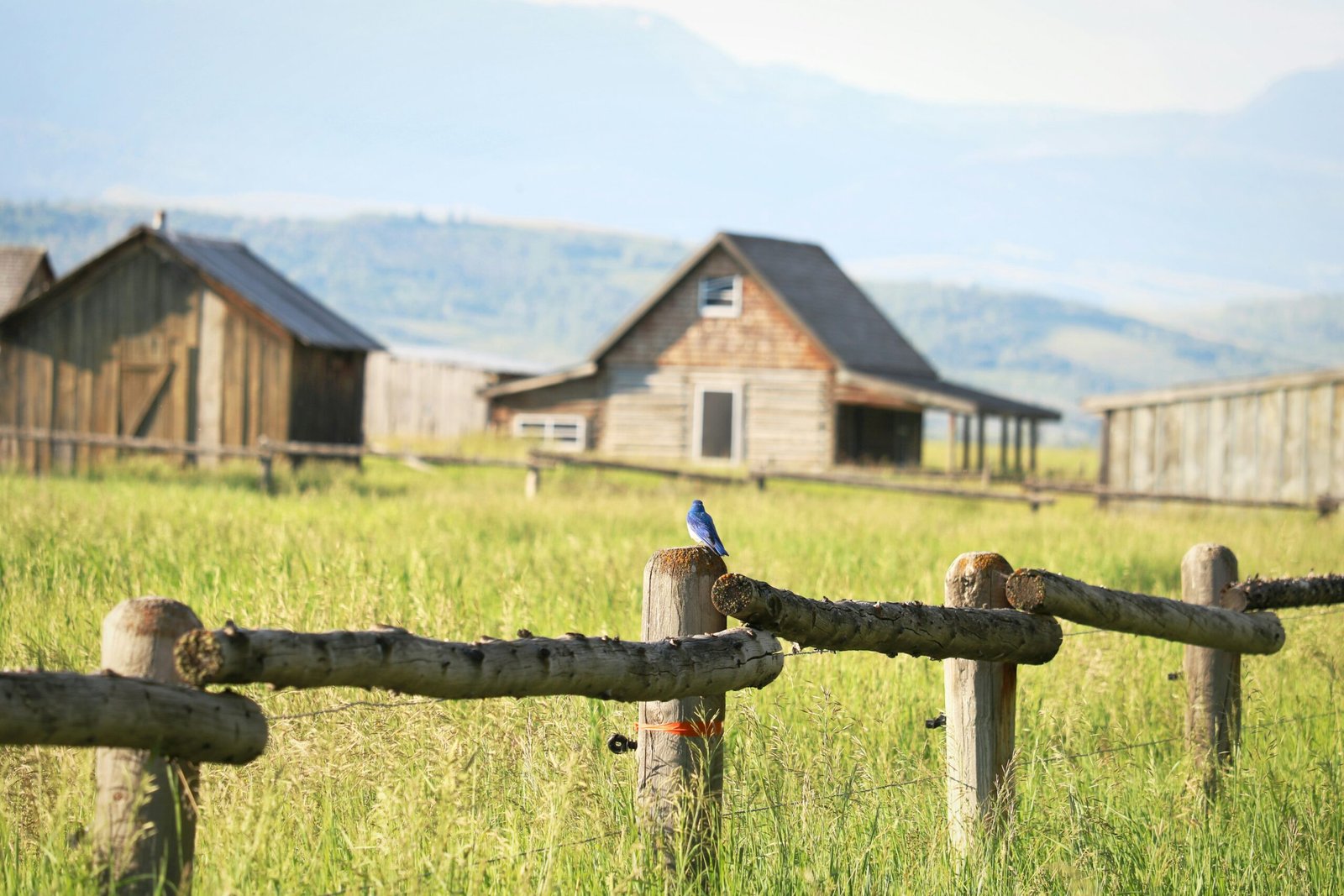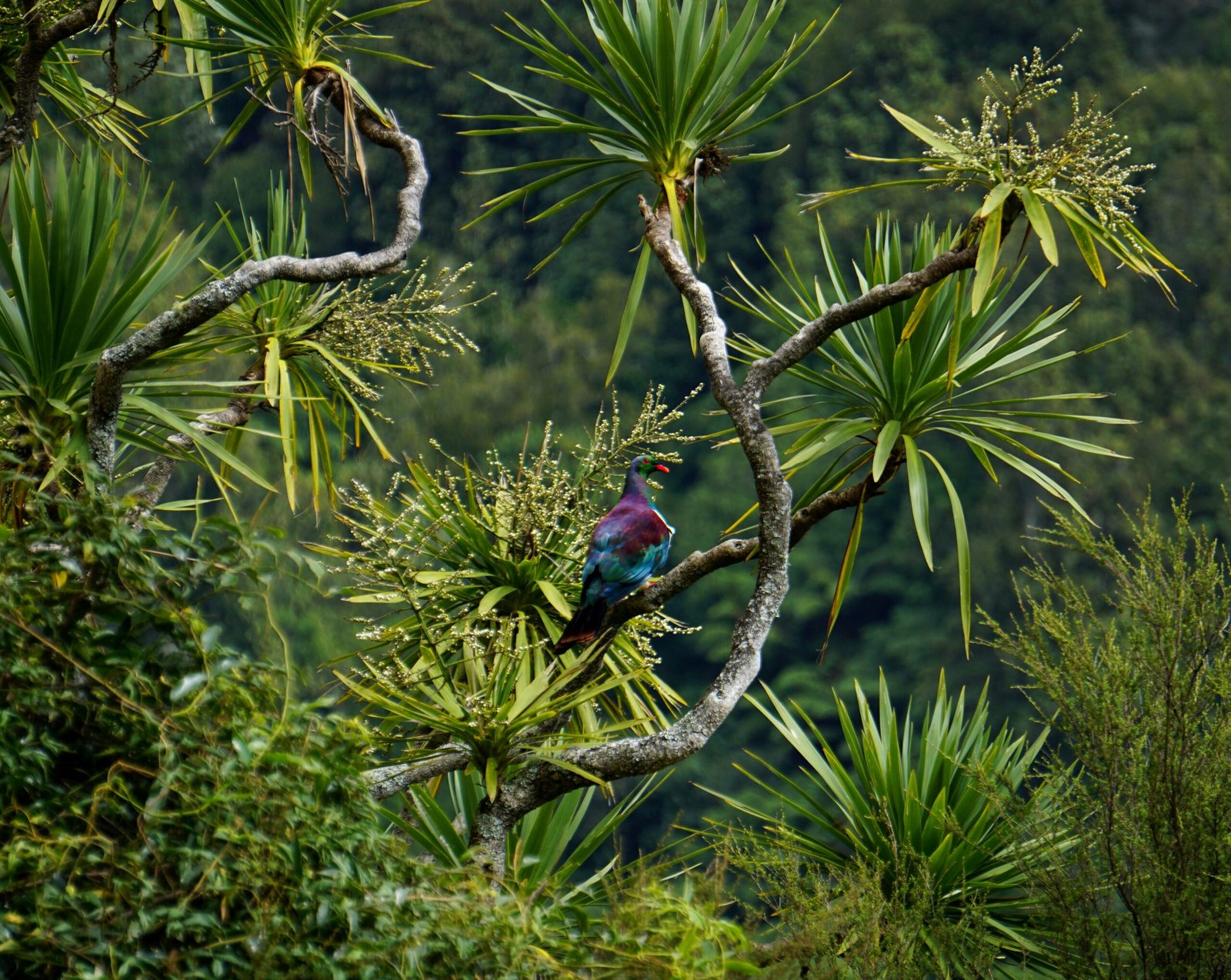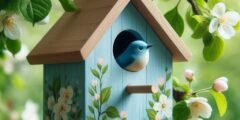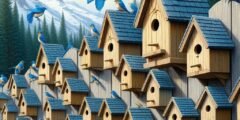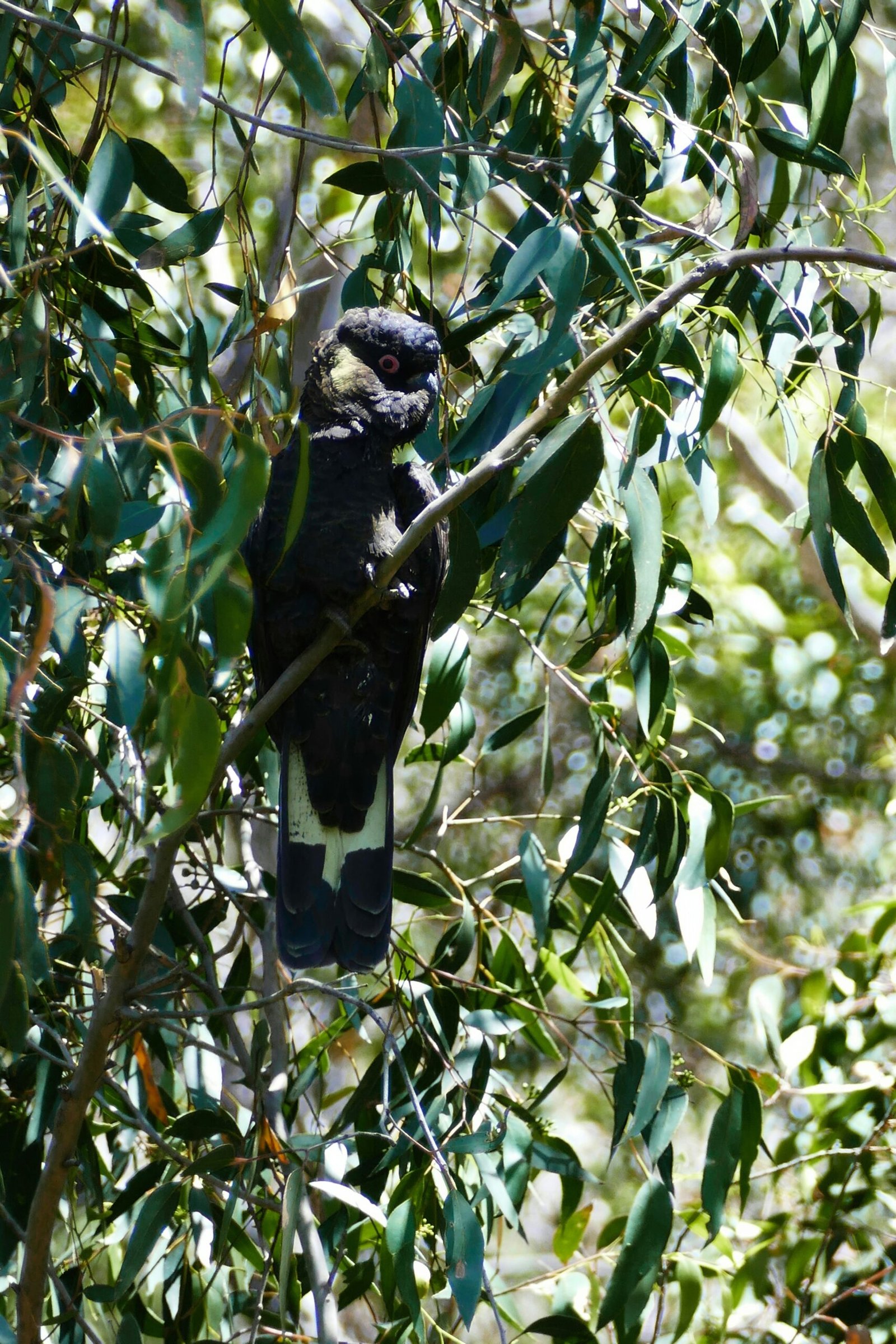Introduction: The Debate About Painting Bluebird Houses
The question, “Is it okay to paint a bluebird house?” has sparked considerable debate among bird enthusiasts and conservationists. On one side, proponents argue that painting bluebird houses can offer various advantages, particularly in terms of weather protection. A well-painted house can shield the wood from harsh environmental conditions, extending its lifespan and maintaining its structural integrity. This can be especially beneficial in regions with extreme weather, where untreated wood may deteriorate rapidly.
However, the opposing view brings forth equally compelling arguments. Critics caution that painting bluebird houses might have unintended consequences, such as deterring bluebirds from nesting. Bluebirds are known for their specific nesting preferences, and an unfamiliar appearance or scent from paint could potentially make the house less attractive to them. Furthermore, certain types of paint could release harmful chemicals, posing a risk to the health of both the birds and their fledglings.
This ongoing debate highlights the need for a nuanced understanding of the subject. While the practical benefits of painting are clear, the potential drawbacks cannot be ignored. Therefore, the key to resolving this issue lies in balancing the protective advantages of painting with the necessity to ensure the habitat remains inviting and safe for bluebirds. As we delve deeper into this topic, we will explore the recommended colors and painting techniques that aim to harmonize these considerations, providing a comprehensive guide for those wondering, “Is it okay to paint a bluebird house?” and, if so, what colors are preferred.
Potential Downsides of Painting a Bluebird House
While painting a bluebird house can have aesthetic and protective benefits, it is essential to consider the potential downsides before proceeding. One significant concern is the strong odor that fresh paint emits. Bluebirds, like many other bird species, have a keen sense of smell, and the scent of fresh paint can be off-putting, potentially discouraging them from nesting in the house. This issue is particularly pertinent with oil-based paints, which tend to have stronger odors compared to water-based or latex paints.
Another critical factor is the need to avoid painting the interior of the bluebird house or the entrance area. When birds come into direct contact with painted surfaces, there is a risk of them ingesting paint particles or absorbing harmful chemicals through their skin. This exposure can be detrimental to their health, leading to potential toxicity or other adverse effects. Therefore, it is recommended to keep the interior and entrance areas free from paint to ensure the safety and well-being of the bluebirds.
Additionally, certain paint types and colors can create other hazards. For instance, dark colors can absorb more heat, leading to elevated temperatures inside the birdhouse. Overheating can be particularly dangerous for nesting birds and their chicks, as it can cause dehydration and heat stress. Moreover, glossy or reflective paints can attract predators by making the birdhouse more conspicuous. It is advisable to choose light, non-reflective colors that blend well with the natural surroundings to minimize these risks.
In summary, while painting a bluebird house is generally acceptable, it is crucial to consider these potential downsides and take appropriate measures to mitigate them. By doing so, you can create a safe and welcoming environment for bluebirds to thrive.
Preferred Colors for Bluebird Houses
When considering whether it is okay to paint a bluebird house, understanding the preferred colors becomes essential. Experts often recommend certain hues to ensure the safety and comfort of the bluebirds. Natural tones such as brown, green, and light gray are frequently suggested. These colors mimic the bluebirds’ natural habitats, providing a seamless blend into their environment which can help protect the birds from predators.
Avoiding bright colors, especially white, is crucial. White paint is highly reflective and can overheat the birdhouse during warmer months. Excessive heat can be detrimental to the bluebirds, particularly to the eggs and chicks. On the other hand, natural colors like brown and green help regulate the temperature inside the house, maintaining a stable and safe environment. These colors also reduce visibility to predators, offering a layer of camouflage that can be vital for the birds’ survival.
Light gray is another recommended color. It offers a balance between blending into the natural surroundings and maintaining a cooler temperature within the birdhouse. Light gray doesn’t absorb as much heat as darker colors, making it a suitable option for various climates. Moreover, this color is less likely to attract unwanted attention from predators, ensuring a safer nesting spot for bluebirds.
In essence, choosing the right color for a bluebird house is more than an aesthetic decision. It involves a thoughtful consideration of the birds’ natural behavior and environmental needs. By selecting colors like brown, green, or light gray, we can create a more inviting and secure habitat for bluebirds, aligning with their natural preferences and ensuring their well-being.
The Reasoning Behind Color Choices for Bluebird Houses
When considering whether it is okay to paint a bluebird house, understanding the reasoning behind color choices is essential. Bluebirds, like many other cavity-nesting birds, have specific habitat preferences that influence their nesting choices. Natural cavities, such as those found in dead trees or wooden fence posts, often have muted, neutral tones. Therefore, painting a bluebird house in neutral colors such as beige, gray, or natural wood tones can mimic these natural environments, making the house more appealing to bluebirds.
Additionally, the choice of color for a bluebird house can significantly impact its internal temperature. Bluebirds are sensitive to extreme temperatures, and since their nesting season often coincides with the warmer months, it is crucial to consider how different colors affect heat absorption and reflection. White or very light colors, while potentially attractive, can reflect too much sunlight. This reflection can lead to higher internal temperatures, making the house uncomfortably hot for the birds and potentially hazardous to their health.
Conversely, darker colors tend to absorb more heat, which can also be problematic. However, moderately dark or earthy tones, such as muted greens or browns, can strike a balance by blending into the surroundings while not excessively raising the temperature inside the house. These colors can help maintain a more stable and suitable environment for the bluebirds and their chicks.
Apart from temperature considerations, the visibility of the bluebird house to both predators and the birds themselves is another factor to take into account. Brightly colored houses may draw unwanted attention from predators, while more subdued colors can help the house remain inconspicuous, providing a safer nesting site for the bluebirds.
Therefore, when deciding on painting a bluebird house, it is advisable to choose neutral or softly muted colors that harmonize with natural surroundings. These choices not only make the house more attractive to bluebirds but also ensure a safer and more comfortable nesting environment.
Advantages of Using Unpainted Wood for Bluebird Houses
Choosing to leave a bluebird house unpainted offers several compelling advantages. One of the primary benefits is the natural aesthetic that unpainted wood provides. Bluebirds are naturally attracted to wood in its unaltered state, as it closely mimics their natural nesting environments. This can increase the likelihood of bluebirds choosing the house for nesting, thereby promoting a healthier ecosystem for these birds.
Another significant advantage of using unpainted wood is the avoidance of potential paint-related concerns. Many paints and finishes contain chemicals that could be harmful to bluebirds. Even when non-toxic paints are used, there is always a risk, albeit minimal, of ingestion or inhalation of harmful substances. By opting for unpainted wood, these risks are entirely eliminated, ensuring a safer environment for both adult bluebirds and their chicks.
Additionally, unpainted wood often has a rougher texture compared to painted surfaces. This rough texture can provide better footing for chicks, which is particularly important as they learn to navigate their new surroundings. The natural grip of unpainted wood can help prevent slips and falls, thereby reducing the risk of injury to the young birds.
In summary, unpainted wood offers numerous benefits for bluebird houses. Its natural look is more attractive to bluebirds, its chemical-free composition is safer, and its rough texture provides better footing for chicks. While the question “is it okay to paint a bluebird house?” can be answered affirmatively, understanding the advantages of unpainted wood may lead many to favor this natural choice.
Staining vs. Painting: Which is Better?
When it comes to enhancing and protecting bluebird houses, both staining and painting have their merits. However, many experts argue that staining is generally a safer and more appropriate option than painting. This preference stems largely from the fact that stains, particularly non-toxic and water-based varieties, allow the wood to breathe and do not trap moisture inside the birdhouse. This is crucial in maintaining a healthy environment for the bluebirds.
One of the primary advantages of using stains over paint is their ability to penetrate the wood rather than simply coating the surface. This penetration fortifies the wood from within, providing a longer-lasting shield against the elements without the risk of peeling or chipping that is often associated with paint. Additionally, stains typically do not contain the same level of volatile organic compounds (VOCs) found in many paints, making them a safer option for the birds.
When choosing a stain for your bluebird house, it is essential to opt for products that are specifically labeled as non-toxic and water-based. These stains are designed to be environmentally friendly and safe for wildlife. Transparent or semi-transparent stains are often recommended, as they enhance the wood’s natural beauty while still providing the necessary protection. Avoid dark stains, as they can absorb excessive heat, potentially making the birdhouse too warm for its inhabitants.
In contrast, painting a bluebird house can introduce several potential risks. Paint can form a barrier that traps moisture inside the wood, leading to mold or rot over time. Moreover, the chemicals present in many paints can be harmful to the birds, particularly if they are not adequately aired out. If you do choose to paint, ensure that the paint is non-toxic, water-based, and applied in thin layers to minimize any adverse effects.
Ultimately, staining offers a harmonious balance of protection and aesthetic appeal while prioritizing the well-being of the bluebirds. By selecting the right stain and applying it correctly, you can create a safe and attractive habitat for these delightful birds.
Additional Benefits of Painting a Bluebird House
Beyond the aesthetic appeal, painting a bluebird house offers several practical benefits that can significantly enhance the well-being of its avian inhabitants. One of the primary advantages lies in the potential for temperature regulation within the house. During warmer months, dark-colored surfaces absorb more sunlight, which can lead to excessively high temperatures inside the birdhouse. This can create an uncomfortable and potentially hazardous environment for bluebirds, especially for their delicate eggs and young chicks.
Conversely, using light-colored paint can reflect a significant portion of sunlight, helping to maintain a cooler and more stable internal temperature. This regulation is crucial in ensuring that the bluebird house remains a hospitable and safe nesting site throughout the breeding season. By opting for lighter hues, such as soft pastels or natural wood tones, you can make a substantial difference in the comfort levels within the birdhouse.
Moreover, painting a bluebird house can provide an added layer of protection against the elements. High-quality, non-toxic exterior paint can help shield the wood from moisture, preventing rot and extending the durability of the structure. This protective barrier is especially important in regions prone to heavy rainfall or fluctuating weather conditions. A well-maintained birdhouse not only offers a safer habitat for bluebirds but also reduces the frequency of repairs and replacements, making it a more sustainable option for bird enthusiasts.
While the question “is it okay to paint a bluebird house?” is common, the benefits clearly suggest that with the right choices, painting can enhance the longevity and functionality of the birdhouse. Selecting appropriate colors, primarily lighter shades, can ensure that the birdhouse meets the needs of its feathered residents while blending harmoniously with the natural surroundings.
Should You Repaint a Weathered Bluebird House?
When considering whether to repaint a weathered bluebird house, it is essential to evaluate the condition of the wood and the overall structure. If the wood is significantly weathered, applying a fresh coat of paint can provide a protective layer that helps to extend the life of the birdhouse. This protective measure guards against harsh weather conditions, moisture, and pests, which can all contribute to the deterioration of the wood.
However, it is crucial to use non-toxic, bird-safe paint to ensure the health and comfort of the birds. Paints with low or no volatile organic compounds (VOCs) are highly recommended as they minimize the risk of harmful fumes and chemicals. Moreover, it is advisable to avoid painting the interior of the birdhouse, as birds can be sensitive to fumes and chemicals, which may affect their health and nesting behavior.
On the other hand, there are situations where it might be best to leave the bluebird house as is. If the weathering is only superficial and the structural integrity of the house remains intact, repainting may not be necessary. Bluebirds are more concerned with the functionality of their nesting site rather than its appearance. Therefore, prioritizing the birds’ comfort and natural habitat over aesthetic considerations is paramount.
Balancing aesthetics with the health and comfort of bluebirds involves making informed decisions about whether or not to repaint a weathered birdhouse. If repainting is deemed necessary, selecting appropriate paint and limiting its use to the exterior will help create a safe and inviting environment for the birds. Ultimately, the goal is to ensure that the bluebird house remains a durable and hospitable nesting site while minimizing any potential risks to the birds.
FAQs
Here are some frequently asked questions regarding painting bluebird houses, providing quick and concise answers to help you make informed decisions:
Is it okay to paint a bluebird house?
Yes, it is okay to paint a bluebird house. However, it is important to use non-toxic, water-based paints to ensure the safety of the birds. Avoid using bright or dark colors that may attract predators or cause the house to overheat.
What colors are preferred for painting a bluebird house?
Neutral and natural colors are preferred for painting a bluebird house. Colors such as light gray, beige, and soft green blend well with the natural environment and provide good camouflage. These colors also help regulate the temperature inside the house, keeping it comfortable for the birds.
Can I use bright colors to paint a bluebird house?
It is generally not recommended to use bright colors for painting a bluebird house. Bright colors can attract predators and make the house more visible, which may deter bluebirds from nesting. Stick to soft, muted tones that harmonize with the surroundings.
Should I paint the inside of the bluebird house?
No, you should not paint the inside of the bluebird house. The interior should remain natural and untreated to avoid exposing the birds to harmful chemicals. Additionally, a natural interior provides a more suitable environment for nesting.
How often should I repaint a bluebird house?
Repainting a bluebird house is typically necessary every few years, depending on the weather conditions and the quality of the paint used. Regular inspection of the house will help you determine when it needs a fresh coat of paint to maintain its condition and appearance.
Conclusion: Making the Best Decision for Your Bluebird House
In conclusion, determining whether to paint a bluebird house and selecting the appropriate color entails a delicate balance between aesthetics and functionality. As discussed, painting a bluebird house is permissible, provided that non-toxic, water-based paints are used. This helps to safeguard the health of these charming birds. Alternatively, staining the house can also be a viable option, preserving the natural wood appearance while offering adequate protection.
Color selection plays a crucial role in ensuring the bluebirds’ comfort and well-being. Opting for lighter, earth-toned colors such as white, beige, or light gray can help reflect heat and maintain a cooler interior temperature, especially during the summer months. These colors also blend seamlessly with the natural environment, providing an additional layer of camouflage from potential predators.
While darker hues may be aesthetically appealing, they are typically discouraged due to their tendency to absorb heat, potentially creating an inhospitable habitat for bluebirds. Therefore, prioritizing lighter shades not only enhances the visual appeal but also serves the practical purpose of promoting a safe and comfortable environment for the birds.
In essence, the decision to paint or stain your bluebird house should be guided by a commitment to the birds’ health and habitat needs. By making informed choices about paint type and color, you contribute positively to the conservation efforts of these beautiful creatures. We encourage you to take these considerations into account and choose the best approach that aligns with both your aesthetic preferences and the bluebirds’ welfare. With thoughtful planning and execution, your bluebird house can become a welcoming and safe sanctuary for these delightful birds.
